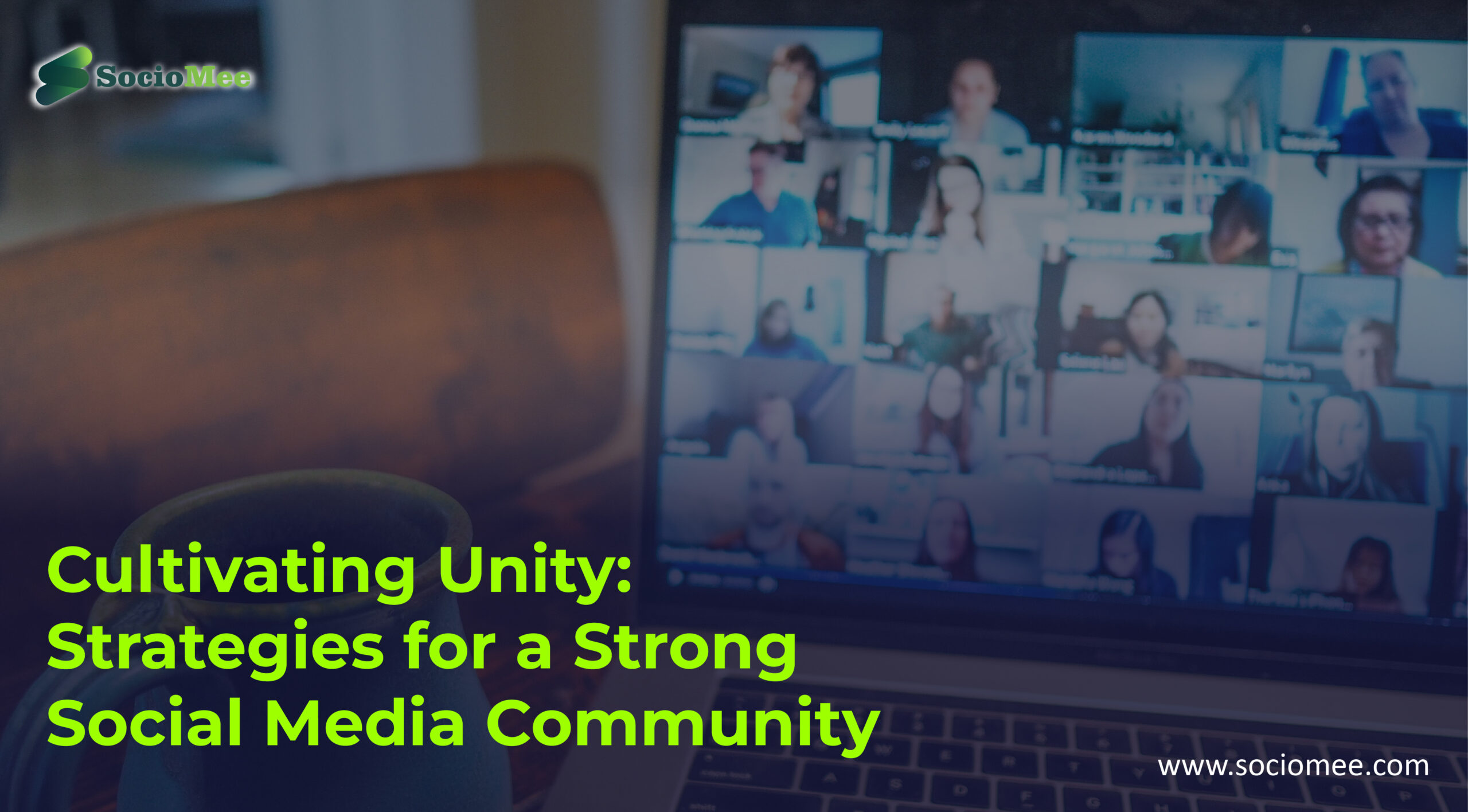Creating an effective social media workflow can help you to maximize the success of your social media campaigns and save time, money, and resources. This article provides 15 ultimate steps for crafting a social media workflow that will help you enhance your success and take your business to the next level.
From setting goals and objectives to optimizing your content and analyzing results, these steps provide a comprehensive guide to creating an effective social media workflow.
#1. Identify Your Social Media Objectives
Identifying your social media objectives is key to creating an effective social media workflow. It’s important to determine what you want to achieve with your social media efforts in order to create a plan that will help you reach your goals.
Your objectives should be specific, measurable, achievable, relevant, and time-bound (SMART) and to understand it in a more unique way, let’s take an example, you may want to increase your followers by 10% within the next three months or increase website traffic by 20%.
Your objectives should also be based on specific business goals. For example, if you are trying to increase brand awareness, you may want to focus on increasing followers or engagement. If you are looking to generate leads, you may want to focus on increasing website traffic or calls-to-action.
Once you have determined your objectives, you can then create a social media workflow that will help you reach them. Your workflow should include tasks such as creating content, scheduling posts, monitoring analytics, and engaging with followers.
By taking the time to identify your social media objectives and create an effective workflow, you will be able to enhance your success and reach your goals more efficiently.
#2. Analyze Your Current Social Media Presence
Analyzing your current social media presence is the first step in crafting an effective social media workflow. When evaluating your current presence, consider the following:
- What platforms are you currently active on?
- Are you leveraging the most effective content strategies for each platform?
- Are you maximizing the use of visuals and other engaging content?
- What type of content are you creating?
- How often are you posting?
- Are you using analytics to measure the performance of your posts?
- Are you engaging with your followers?
By examining the above questions, you can gain insight into what is and isn’t working with your current social media presence and create a plan to improve it. Moreover, you can use this analysis to determine which platforms you should focus your efforts on and which strategies will be most effective for your brand.
Once you’ve identified the areas in need of improvement, you can begin crafting an effective social media workflow to help grow your presence and success.
Connect with new world
#3. Define Your Target Audience
Before you can craft an effective social media workflow, you must first identify your target audience. Knowing who you’re creating content for is essential to developing a successful social media strategy. To define your target audience, you must first determine the demographic of the people you want to reach. This includes age, gender, location, income level, interests, and more. You should also consider how your target audience consumes content. Are they mostly on mobile or desktop? What platforms do they use the most? What type of content do they prefer?
Once you’ve identified the demographic of your target audience, you should create a buyer persona. A buyer persona is a detailed description of the person you’re trying to reach. This will help you craft content that resonates with your target audience and better understand their needs.
By defining your target audience, you can create content that is tailored specifically to them. This will help you get the most out of your social media efforts and increase the success of your social media workflow.
#4. Set Up a Social Media Calendar
Setting up a social media calendar is a key component of crafting an effective social media workflow. Having a well-defined calendar will help you schedule and plan your content in advance, automate processes, and stay consistent with your social media presence.
- To set up a social media calendar, start by determining key dates that you want to focus on each month or quarter. These can be major holidays, important company milestones, or any other special days that your audience may be interested in hearing about. Once you’ve identified these dates, create a calendar that outlines when to post content related to each one.
- Next, decide how often you want to post content on each of your social media accounts. While some platforms may recommend posting more often, it’s important to find the optimal frequency for your own brand and audience. Once you’ve determined how often you’ll post, create a schedule for each of your social media accounts that outlines when to post content.
- Finally, identify key influencers and thought leaders in your industry and create a schedule to follow and interact with them. This will help you build relationships that can lead to meaningful engagement and potential partnerships.
It is the most important step in creating an effective social media workflow. By taking the time to plan out your content in advance, you can ensure that your posts are timely and consistent across all of your social media accounts.
#5. Establish Clear Goals
Establishing clear goals is the first and most important step in crafting an effective social media workflow. It’s essential to identify the purpose of your social media presence and what you hope to achieve by engaging with your audience.
- What do you want to accomplish?
- Who is your target audience?
- How will you measure success?
Once you have a clear understanding of your objectives, you can create a plan of action that will help you reach your goals. It’s important to be realistic about what you can achieve in a given time frame, as well as to define milestones to help you track your progress. Moreover, it’s beneficial to set measurable goals so you can evaluate the success of your social media efforts.
By setting clear objectives, you can ensure that your social media workflow is designed to meet your specific business objectives and it directly will help you create content that attracts your audience and drives engagement.
#6. Define Your Brand Voice
Having a well-defined brand voice is an essential part of crafting an effective social media workflow. A brand voice establishes the tone, style, and personality of your brand, and helps to create a consistent message that resonates with your target audience. Your brand voice should be reflective of your values and the type of content that you share. It should be unique and authentic, and should help to differentiate you from your competitors.
When creating your brand voice, there are a few key elements to consider. First, think about the purpose of your brand and what message you are trying to convey. Consider the words that you use, the tone you employ, and the overall impression you want to give. It’s also important to pay attention to the types of visuals that you use. Images and videos are a great way to engage your audience and draw them into your message.
Once you’ve established your brand voice, be sure to use it consistently across all platforms. This helps to create a unified presence and builds trust and recognition. Your brand voice should be an extension of your brand, so take the time to create one that accurately reflects your values and meets the needs of your target audience. Doing so will help to ensure that your message resonates and that your social media workflow is effective.
Connect with new social community
#7. Create High-Quality Content
Creating high-quality content is essential to any successful social media workflow. Quality content helps to establish your brand and can help to differentiate you from competitors. When crafting content, it is important to consider how it will be received by your target audience. Keep in mind the type of content that will resonate with them, as well as the format and tone of your posts.
When creating content, be sure to use relevant keywords and phrases that are commonly used by your target audience. This will make it easier for your posts to be found by potential customers. Additionally, it is important to make sure that your content is informative and engaging. It should provide valuable information to the reader and encourage them to take action and be sure to use visuals to enhance your posts. Quality visuals can help to draw the reader’s attention and make your posts more visually appealing and also visuals can help to convey your message more effectively.
Finally, be sure to stay up to date with industry trends and news. This can help to inform your content and ensure that your posts remain relevant. Additionally, it can help to generate organic engagement, as people are more likely to engage with posts that are timely and relevant.
#8. Optimize Your Social Media Profiles
The success of your social media strategy is largely dependent on how well your profiles are optimised. It’s important to make sure your profiles accurately reflect your brand’s message and are properly updated.
- Start by making sure each profile is complete, including a profile picture and cover photo. The profile photo should be consistent across all profiles and should reflect your brand image. The cover photo should be customized for each profile—for example, you may use a video for your YouTube channel or a product photo for your Instagram profile.
- Next, create a compelling bio. Your bio should include a few sentences that explain who your company is and what it does. Use keywords that your target audience might use to search for your page. Make sure to include a link to your website in the bio and Include your contact information on your profile, email address, phone number, or physical address and also include your social media profiles on your website, so customers know where to find you.
- Finally, be sure to review and update your profile on a regular basis. This could include adding new posts or updating contact information. Keeping your profile up-to-date will help you stay top-of-mind with your customers and potential customers.
#9. Use Automation to Save Time
Automation is a great way to save time when crafting an effective social media workflow and automation allows you to automate tasks such as scheduling posts, monitoring conversations, and tracking analytics. This allows you to focus on other aspects of your social media strategy, such as developing content or engaging with followers and automation tools can also help you save time by automating repetitive tasks, such as manually creating reports or managing multiple accounts. By automating these tasks, you can free up time to focus on more strategic tasks, such as developing content or engaging with followers. Automation can also help you stay organized by keeping your social media accounts organized, which can help you streamline your workflow.
When crafting an effective social media workflow, it’s important to select the right automation tools. There are a variety of automation tools available, and it’s important to choose the ones that best suit your needs. For example, if you’re looking for a tool to help you schedule posts, you might consider a tool.
#10. Track Relevant Metrics
Once you have established your social media workflow, it’s essential to track and measure the results of your efforts. This will help you determine whether your workflow is effective and make any necessary adjustments to ensure that your strategy is working as intended.
Your metrics should be tailored to the goals you have set. For example, if your goal is to increase engagement, you should track metrics such as the number of likes, comments, and shares on your posts. If your goal is to increase website traffic, then you should track page views, time on page, and the number of referrals from social media.
It is also important to track metrics that measure the overall success of your social media efforts, such as brand awareness, website visits, conversions, and customer acquisition. By tracking these key performance indicators, you can gain valuable insight into the performance of your social media strategy and make improvements to enhance your success.
#11. Analyze Your Competitors
Analyzing your competitors’ social media activity is a great way to get an idea of what works and what doesn’t in terms of engaging your target audience. It’s also a great way to get a better understanding of what your competitors are doing to gain an advantage in the market.
- To begin, first identify your competitors’ social media channels and activity. Take note of their posting frequency, topics, and types of content they post. Also, take note of the type of interactions they’re receiving from their followers, such as likes, comments, and shares.
- Once you have a good understanding of your competitors’ social media activity, begin to analyze the data. Look for patterns in the type of content they’re posting, the topics they’re discussing, and the interactions they’re receiving.
- You can also use tools such as SocioMee Analytics to track and analyze your competitors’ social media activity. These tools can provide you with invaluable insights into your competitors’ strategies and tactics and help you identify opportunities that you may have otherwise missed.
- Finally, use the insights from your analysis to craft your own social media workflow. Make sure to focus on what works for your competitors and capitalize on any areas where you can improve upon their strategies. By analyzing your competitors’ social media activity, you can gain valuable insight into the market and gain an advantage over your competition.
#12. Leverage Influencers
Leveraging influencers is one of the most powerful tools in your social media workflow. Influencers are well-known individuals who have a large following and can help spread the word about your brand and content. They can help to increase your reach and engagement by amplifying your messages to their followers.
- Start by looking at your current followers and identify those with the most followers and greatest influence and you can also use available tools to search for influencers within a specific industry or keyword and once you’ve identified the influencers, reach out to them and see if they’d be interested in collaborating or recommending your products or services.
- You can also leverage them for influencer marketing campaigns and these campaigns involve engaging influencers to help spread the word about your brand, products, and services. You can also use their content to promote your brand on your own social media channels.
Leveraging influencers is a great way to build brand awareness and increase your reach and engagement. With the right influencers, you can create a powerful social media workflow that will help you reach your goals.
#13. Leverage Social Advertising
When it comes to crafting an effective social media workflow, leveraging social advertising is an important step to take. Social advertising can be a great way to reach your target audience, drive engagement, and increase conversions.
When creating a social media advertising campaign, here are a few key points to consider:
- Define your goals: What do you hope to accomplish with your social media campaign? Do you want to increase followers, generate leads, or drive sales? Establishing your objectives will help you determine the type of content and format to use, as well as the budget you should allocate.
- Research your target audience: Knowing who you’re targeting is essential to any successful campaign. Take time to research your target audience, such as their age range, location, interests, and other demographic information. This will help you create content that resonates.
- Choose the right platform: Different platforms have different strengths and weaknesses, so it’s important to choose the right one for your campaign. Consider factors such as the type of content you’re creating, the size of your budget, and the demographics of your target audience.
- Analyze the results: Once your campaign is complete, it’s important to analyze the results. This will help you determine what worked and what didn’t, and make adjustments for future campaigns.
By leveraging social advertising, you can create an effective social media workflow that helps you reach your goals. Take time to research your target audience, choose the right platform, and analyze the results of each campaign to ensure your success.
#14. Repeat and Refine Your Workflow
Once you’ve established an effective social media workflow, it’s important to regularly review your process, refine it as necessary and social media is constantly evolving, so your workflow should be too. Start by auditing your current workflow and identifying areas of improvement. Consider the timing of your social media posts, the content you’re sharing, and the platforms you’re using.
- Are you using the right channels?
- Are you reaching your desired audience?
Make sure you’re leveraging analytics to measure the performance of your posts and by understanding which posts are resonating with your audience, you can adjust your strategy accordingly. You should also look at ways to automate your workflow. There are plenty of tools available to help streamline your process, such as scheduling tools and analytics tools.
Conclusion
In conclusion, creating an effective social media workflow can help streamline your social media presence, save time, and maximize your success. By developing a plan, setting goals, and tracking progress, you can ensure that your social media efforts are optimized to reach the right audiences. Moreover, you should consider leveraging tools that help streamline your workflow, such as scheduling platforms and analytics tools. And By taking the time to craft an effective social media workflow, you can get the most out of your social media efforts and effectively promote your business.









